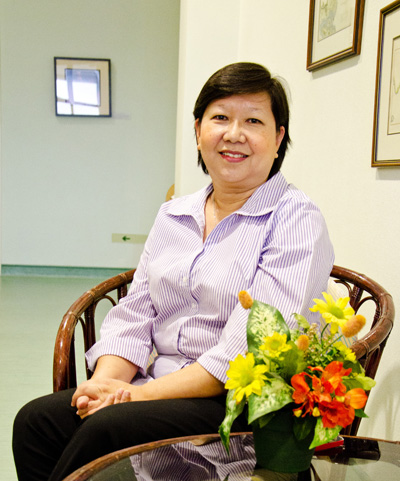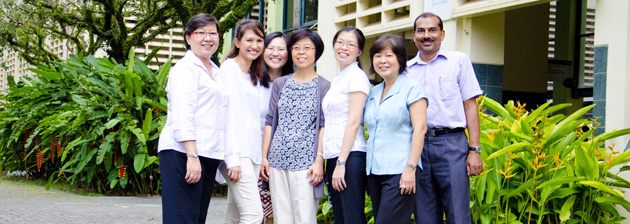Why Singapore’s English Teachers Should Embrace Singlish, Not Fight It
Is it time for Singaporean educators to embrace Singlish as a legitimate learning tool? What the Research […]
Read More
Some teachers who teach Social Studies in primary schools didn’t specialize in the Humanities when they were in school. But if they ever need advice, teacher educators at NIE are always here to help.
 A Senior Lecturer in NIE and President of the History Association of Singapore, Dr Kho Ee Moi has an enduring relationship with the Humanities. She used to teach secondary school students of different abilities and was also involved in curriculum development for History and Social Studies.
A Senior Lecturer in NIE and President of the History Association of Singapore, Dr Kho Ee Moi has an enduring relationship with the Humanities. She used to teach secondary school students of different abilities and was also involved in curriculum development for History and Social Studies.
Ee Moi certainly has much to share with teachers when it comes to Humanities education. Along with other NIE colleagues, she has been conducting workshops on inquiry-based learning for Primary Social Studies teachers.
But the veteran educator recognizes that some teachers need more than just training in the inquiry approach. This is because they didn’t specialize in Humanities subjects in school. To address this, Ee Moi and her colleagues get back to basics in the workshops.
“What we needed to do initially was to help teachers see the importance of Social Studies,” she says. Even though Social Studies is a non-examinable subject in primary schools, it plays an important role in our children’s citizenship education.
In the workshops, the teachers – especially those without a Humanities background – are encouraged to adopt a conceptual approach to teaching Social Studies. “We need to clarify the concepts, what these are and how to explore them,” says Ee Moi.
If teachers just stick to the facts, Ee Moi explains, pupils may not grasp the connections between events and issues that they are learning about. As such, they won’t get to see the big picture.
For example, when teaching about the founding of Singapore, many teachers tend to focus on the factual details, such as who founded Singapore and when. But concepts such as colonialism or migration can be explored as well.
“Pupils learn the factual details, and learn that people came from China, India and Malaysia. But they don’t know about immigration and the push and pull factors,” Ee Moi elaborates. Why not relate all these to current issues, such as the influx of foreign talent into Singapore?
Why do foreign talent come to Singapore? What are the consequences of them coming? How do they adapt to life in Singapore? These are questions that are worth exploring with pupils.
“We want to enable pupils to use inquiry to understand why people came, how they felt and how they settled down here. It is about discussing issues rather than just facts from the textbooks,” Ee Moi says.

“We grew up in schools where teachers talked while we took notes and underlined information. But things are different now,” Ee Moi says as she recalls her own schooling days.
Times have changed since then and so must our ways of teaching and learning.
With the shift towards inquiry-based learning, Ee Moi says the ultimate goal is for pupils to become independent and self-directed learners. “The onus is on pupils to learn, not for the teacher to ‘feed’ them information all the time.”
Teachers who need to be in control may feel uncomfortable initially. Speaking from experience, Ee Moi notes: “To hand over the responsibility to pupils and then guide them by the side is very hard! There is a tendency to tell them the answer.”
What is needed now is to equip pupils with the right skills to inquire. “In the inquiry approach, pupils need to go out and look for information. So we must teach them how to seek the information and analyse what they have found – that’s critical thinking.”
If teachers don’t provide enough guidance, pupils may simply copy and paste information from the Internet. If this happens, there will not be any learning.
The new approach may take some getting used to but Ee Moi is optimistic our teachers can do it. “One workshop is not going to perform a miracle. It takes time,” she says. “But if teachers keep trying, it will bear fruit!”